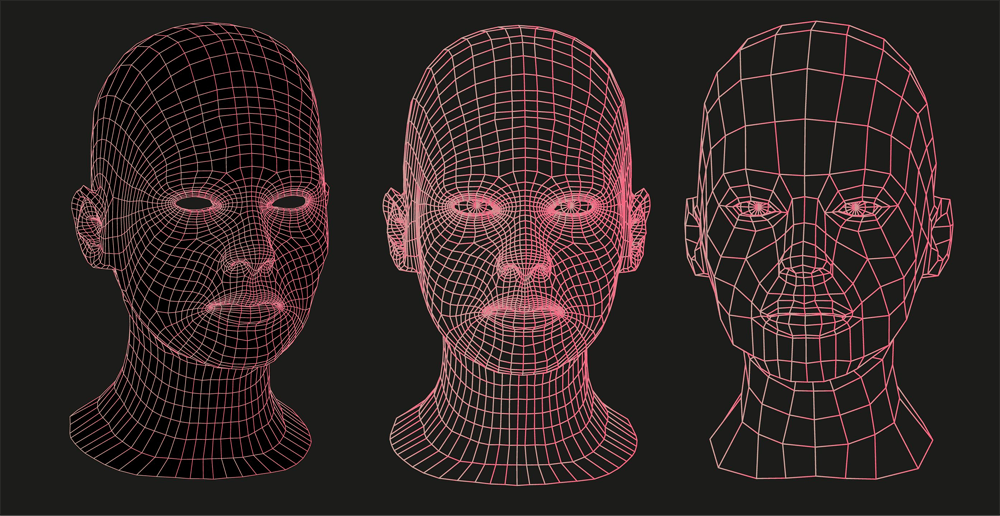Understanding Wrinkle Treatment Areas Versus Units for Optimal Results
Wrinkle treatment areas can seem like a mystery when you’re navigating the world of facial rejuvenation, especially when practitioners start discussing units and treatment zones. If you’ve ever wondered why your friend needed different amounts of wrinkle management treatments for seemingly similar concerns or felt confused by varying pricing models across Melbourne clinics, you’re not alone. The relationship between anatomical areas and treatment units forms the foundation of successful cosmetic treatments, yet it’s one of the most misunderstood aspects of aesthetic medicine.
Understanding this distinction isn’t just about getting value for money; it’s about achieving optimal results that look natural and last. Whether you’re considering your first consultation or you’re a seasoned recipient looking to better understand your treatment planning, grasping how qualified practitioners assess your individual facial anatomy will empower you to make informed decisions. At Melbourne’s most trusted cosmetic clinics, this knowledge transforms uncertainty into confidence, ensuring your wrinkle management journey delivers the fresh, natural results you’re seeking.
Individual Factors Affecting Treatment Requirements
Wrinkle treatment areas require careful consideration of multiple individual factors that significantly influence both the number of units needed and the overall treatment planning approach. Qualified practitioners understand that no two patients are identical, making personalised assessment crucial for achieving optimal results in facial rejuvenation.
Age and Skin Condition Considerations
Age-related changes fundamentally alter how wrinkle management treatments should be approached across different facial areas. Younger patients typically present with dynamic wrinkles that appear only during facial expressions, requiring fewer units to achieve effective muscle relaxation. As we age, these dynamic lines gradually become static wrinkles that remain visible even at rest, often necessitating higher doses or combination approaches with volume enhancement treatments.
The natural decline in collagen production after age 30, occurring at approximately one per cent annually according to dermatological research, means that older patients may benefit from comprehensive treatment planning that addresses both muscle activity and skin quality. Melbourne’s most experienced cosmetic clinicians recognise that skin elasticity variations significantly impact how treatments settle and the longevity of results.
Gender Differences in Treatment Planning
Anatomical differences between male and female patients create substantial variations in treatment requirements across wrinkle treatment areas. Men typically require 20-30 per cent higher doses due to greater muscle mass and larger cranial dimensions. The forehead area in male patients often needs 20-30 units compared to 10-20 units for women, reflecting these fundamental physiological differences.
Aesthetic goals also vary significantly between genders, with men often preferring subtle improvements that maintain strong, masculine features rather than the softer results many women seek. Understanding these preferences ensures treatment planning aligns with individual expectations while respecting natural facial anatomy.
Lifestyle Factors and Treatment Outcomes
Lifestyle considerations profoundly impact both treatment effectiveness and longevity across all facial areas. Smoking restricts blood circulation and accelerates wrinkle formation, while excessive sun exposure breaks down collagen and interferes with treatment durability. Regular exercise, stress levels, and hydration status all influence muscle tension patterns and healing responses, making comprehensive consultation essential for optimal results.
Anatomical Considerations for Different Facial Regions
Facial anatomy fundamentally determines how wrinkle treatment areas respond to cosmetic treatments, making anatomical knowledge essential for achieving natural-looking results. Each region of the face presents unique challenges that require qualified practitioners to understand muscle depth, nerve pathways, and blood vessel locations for safe and effective treatment planning.

Upper Face Treatment Areas
The upper face encompasses the most commonly treated wrinkle treatment areas, including the forehead, glabellar complex, and periorbital region. The frontalis muscle, responsible for forehead lines, presents as a broad, thin structure extending from the eyebrows to the hairline, requiring careful injection technique to maintain natural brow positioning.
Treatment planning for forehead wrinkles demands precise placement at least 1.5-2 centimetres above the orbital rim to prevent brow ptosis. The glabellar complex, containing the corrugator supercilii, procerus, and depressor supercilii muscles, creates frown lines that require understanding of varying muscle depths from medial to lateral positions.
The periorbital area, commonly known as crow’s feet, involves the orbicularis oculi muscle functioning as a circular sphincter around the eye. According to anatomical research, this region requires superficial injections at 1-2 millimetre depth, positioned 1-1.5 centimetres lateral to the lateral canthus to avoid complications affecting vision or smile asymmetry.
Mid and Lower Face Considerations
Lower facial treatments involve significantly more complex anatomical considerations due to dense muscle interactions and higher vascular density. The perioral region contains multiple elevator and depressor muscles with intricate nerve pathways, making treatment planning substantially more challenging than upper face procedures.
Advanced practitioners may address areas such as the mentalis muscle for chin dimpling concerns or masseter muscles for facial contouring effects. These treatment areas typically require higher unit doses and carry increased complication risks, necessitating extensive experience and specialised training. The under-eye area represents another complex region requiring careful assessment of both wrinkle management and volume enhancement approaches.
Professional consultation becomes particularly crucial for lower facial treatments, as improper technique can significantly impact facial expression, speech patterns, and overall aesthetic harmony. Melbourne’s most experienced cosmetic clinicians understand that these treatment areas often benefit from combination approaches integrating multiple cosmetic treatments for optimal results.
Individual Anatomical Variations
Facial anatomy varies significantly between individuals, making standardised treatment protocols inadequate for achieving personalised results. Muscle strength, skin thickness, and facial symmetry all influence how wrinkle treatment areas respond to neuromodulator treatments. Comprehensive consultation processes enable qualified practitioners to map individual muscle patterns and develop customised treatment plans that respect natural facial expressions while addressing specific aesthetic concerns.
Professional Consultation and Treatment Planning
Professional consultation forms the cornerstone of successful wrinkle treatment areas assessment, ensuring personalised treatment approaches that deliver optimal results while maintaining patient safety. Qualified practitioners understand that effective treatment planning requires comprehensive evaluation extending far beyond simple aesthetic concerns.

The Importance of Expert Assessment
Expert assessment by qualified practitioners ensures wrinkle treatment areas receive appropriate treatment planning based on individual facial anatomy and aesthetic goals. Comprehensive consultation processes at Cityskin typically require 30 minutes for thorough evaluation including medical history, cosmetic treatment experience, and psychological readiness assessment.
Professional practitioners utilise systematic approaches to map facial muscle patterns and identify optimal injection sites for each treatment area. Photography documentation enables detailed analysis of facial symmetry and muscle movement patterns, while patient education ensures realistic expectation management about treatment outcomes and maintenance requirements. According to clinical guidelines, qualified practitioners must assess contraindications including neuromuscular disorders, pregnancy, and medication interactions before proceeding with treatment planning.
Customised Treatment Approaches
Customised treatment approaches balance wrinkle treatment areas with appropriate unit dosages based on individual muscle strength and aesthetic preferences. Conservative treatment protocols typically begin with lower doses and gradual titration, allowing practitioners to assess individual responses while minimising complication risks.
Long-term treatment relationships enable practitioners to refine treatment protocols based on patient feedback and clinical outcomes. Melbourne’s most experienced cosmetic clinicians understand that optimal results emerge through consistent treatment planning that integrates skincare regimens, sun protection, and lifestyle modifications with cosmetic treatments. This holistic approach ensures facial rejuvenation goals align with natural-looking results that enhance rather than alter fundamental facial characteristics.
Safety Considerations and Australian Regulations
Safety standards governing wrinkle treatment areas ensure patient protection through comprehensive regulatory frameworks established by Australian health authorities. Understanding these safety protocols empowers patients to make informed decisions about cosmetic treatments while recognising quality indicators in professional practice.
TGA Compliance and Safety Standards
TGA regulations classify wrinkle management treatments as Schedule 4 prescription medicines, requiring qualified practitioners with appropriate medical registration for safe administration. The Therapeutic Goods Administration mandates strict safety protocols including face-to-face consultations, comprehensive informed consent, and detailed treatment documentation for all cosmetic treatments.
Professional facilities must maintain sterile environments with appropriate emergency management procedures and resuscitation equipment readily available. AHPRA registration ensures practitioners meet minimum training requirements and ongoing professional development standards, while facility licensing guarantees hygiene protocols meet Australian healthcare standards. Australian Consumer Law provides additional patient protection through mandatory cooling-off periods and remedies for substandard treatment outcomes.
Identifying Quality Practitioners
Quality practitioners demonstrate verifiable qualifications through AHPRA registration, appropriate training certifications, and membership in recognised professional organisations. Cityskin provide transparent practitioner credentials, comprehensive consultation processes, and realistic expectation management about treatment outcomes.
Red flags include dramatically discounted prices, pressure for immediate decisions, home-based services, and reluctance to provide practitioner qualifications or product authenticity documentation. Quality facilities offer structured follow-up protocols, complication management procedures, and clear treatment planning discussions that prioritise patient safety over commercial considerations.
Making Informed Decisions About Your Wrinkle Treatment Journey
Understanding the relationship between wrinkle treatment areas and units empowers you to make confident decisions about facial rejuvenation while ensuring optimal results. Personalised treatment planning considers your specific aesthetic goals, facial anatomy, and lifestyle factors to develop customised approaches that deliver natural-looking results.
Melbourne’s most experienced cosmetic clinicians at Cityskin combine extensive anatomical knowledge with artistic expertise while maintaining strict TGA compliance and safety standards. Ready to discover how personalised wrinkle management can enhance your natural beauty? Book your complimentary 30-minute consultation with our qualified practitioners to discuss your aesthetic concerns and develop a customised treatment plan tailored to your unique needs.
The information in this article should not be considered medical advice.
Frequently Asked Questions
Forehead treatment requirements vary significantly based on individual muscle strength and facial anatomy. Most patients require 10-25 units for effective wrinkle management, though men typically need 20-30 units due to greater muscle mass. Qualified practitioners assess your specific treatment areas during consultation to determine appropriate dosing for optimal results.
Units-based pricing offers greater transparency about actual product amounts used in your wrinkle treatment areas, while area-based pricing provides cost predictability regardless of individual requirements. Both models can deliver excellent value when administered by qualified practitioners using TGA-approved products with comprehensive consultation and follow-up care.
Multiple treatment areas can safely be addressed during single appointments when performed by experienced practitioners following appropriate safety protocols. Treatment planning considers total unit requirements, patient comfort, and recovery considerations to ensure optimal results across all targeted facial regions while maintaining natural-looking outcomes.
Appropriate dosing becomes evident through natural-looking results that maintain facial expressions while effectively reducing wrinkle formation. Qualified practitioners explain their treatment planning rationale, provide realistic expectation management, and offer follow-up appointments to assess treatment effectiveness and make adjustments if necessary for optimal outcomes.
Treatment variation across wrinkle treatment areas reflects differences in muscle anatomy, skin thickness, and vascular supply throughout the face. Upper facial treatments typically show faster onset and longer duration compared to lower facial areas due to varying muscle characteristics and metabolic activity affecting treatment longevity.